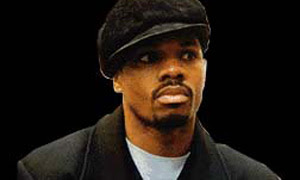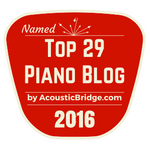
"It's not surprising that Kirk Franklin's second album, Kirk Franklin & the Family Christmas, sold over 500,000 copies in the first 14 weeks after it was released. This album is filled with 11 Christmas songs presented in true Franklin fashion. The album begins with calypso-like music and a sincere Christmas greeting from Franklin. Then the man and his 17 backup singers (the Family) begin singing an abbreviated version of "Silent Night" before proceeding to sing about God's amazing love in "Now Behold the Lamb." For more of Kirk Franklin's Review:
http://music.yahoo.com//read/review//142212843
Here's a video to Kirk Franklin Now Behold The Lamb that I found on line. Gospel Musicians is a great community of musicians who are willing to share what they know about Gospel playing! Listen to Jamal's phat chords!!
Free Gospel Piano Lessons - Now Behold the Lamb, by Kirk Franklin - GospelMusicians.com
http://GospelMusicians.com
Free gospel piano lessons. Now Behold the Lamb, by Kirk Franklin. Learn more gospel jazz phat chords riffs tricks tricks runs and even how to play music by ear INSTANTLY
* Chords to Now Behold The Lamb
I posted the chords to this song back in 2007 in the Hear and Play Musician's Zone.
http://zone.hearandplay.com/index.php?name=PNphpBB2&file=viewtopic&t=2491
Here is the song for everybody. Enjoy!!!
"Now Behold The Lamb" by: Kirk Franklin
Key Bb LH/RH
Intro:
D / Bb-F-C
/ F (2x)
Eb-G / Eb-Bb
/ Bb-C-F
F / A-C-F
/ F-F (octave higher)
/ Bb, C
D / Bb-F-C
/ F
Eb-G / C-F
/ Bb-C-F
F / A-C-F
/ Bb, C
D-Bb / D, Eb, D, Bb
Eb-G / F
/ Bb
F-A-C / A
F#-A-C / A, Bb, A, Bb, A, Bb, A
G-Bb / Bb
/ D
Bb /
/ D
C, G, Bb / Eb
/ Bb
F, C / Eb-G-Bb
F / A, Bb
Bb / C-F-Bb
/ Db, Bb
Bb /
Chorus and Verses (from sheet music):
D / Bb-C-D-F Now be-
Eb / G-Bb-C-F hold the
F / G-A-C-F Lamb
/ F-F (octave higher)
/ Bb, A the
D / C-F-Bb Precious
Eb / G-C-F Lamb of
F / A-C-F God
/ F-F (octave higher)
D / C-D-F-Bb born into
Eb / G-Bb-C-F sin that I
F / A-C-F may
F# / A-C-D live a-
G / G-Bb-D gain, the
OR
A / G-C-Eb or A / E-G-B-D may
D / F#-Bb-C-F live a-
G / F-A-Bb-D gain, the
C / Bb-Eb-G Precious
F, C, F / Bb-Eb-F Lamb of
Bb / Bb-D-F God
(repeat many times)
Modulation chord to C:
G / A-C-F
Modulate to C:
E-E / G-C-D-E Now be-
F-F / A-C-D-G hold the
G-G / C-D-G Lamb
/ B-D-G
G-G /
F-F / the
E-E / D-G-C Precious
F-F / A-D-G Lamb of
G-G / C-D-G God
/ B-D-G
G-G /
F-F /
E-E / D-E-G-C born into
F-F / A-C-D-G sin that I
G-G / B-D-G may
G#-G# / B-D-E live a-
A-A / G-C-E gain, the
OR
B-B / A-D-F or B-B / F#-A-C#-E may
D-D / G#-C-D-G live a-
A-A / G-B-C-E gain, the
D / C-F-A Precious
G / B-D-F-G Lamb of
C / C-E-G God
Vamp (don't know what to call this part):
E / C-E-G Ohhh
F / C-F-A Ohhh
F# / C-D-F#-A Ohhh
G / D-G-B Ohhh
B / B-D-G Ohhh
C / C-E-G Ohhh *go to next part from here
A / C-F-G
B / B-D-G
C / C-E-G
(repeat)
Why
E-E / D-E-G-C You love me
F-F / A-C-D-G so, Lord I
G-G / B-D-G shall
G#-G# / B-D-E never
A-A / G-C-E know
OR
B-B / A-D-F or B-B / F#-A-C#-E shall
D-D / G#-C-D-G never
A-A / G-B-C-E know
(repeat)
the
D / C-F-A Precious
G / B-D-F-G Lamb of
C / C-E-G God
(go back to Ohhh or end)
You can also find the chords to the song Now Behold The Lamb at Earnest and Roline Ministries
http://www.earnestandroline.com

http://christianmusic.com/kirk_franklin/kirk_franklin_ablums.htm
* Song from the album:
Christmas (1995)
01. Silent Night
02. Now Behold The Lamb
03. Jesus Is The Reason For The Season
04. Go Tell It On The Mountain
05. They Need To Know
06. There's No Christmas Without You
07. O Come All Ye Faithful
08. The Night That Christ Was Born
09. Thank You For Your Child
10. Love Song
11. Silver And Gold
http://music.yahoo.com/track/1072025
* Now Behold The Lamb Lyrics
http://www.sing365.com/music/lyric.nsf/Now-Behold-The-Lamb-lyrics-Kirk-Franklin/FB3F16D27F99007C48256CC540007E0E0
Chorus
Now behold the Lamb
the Precious Lamb of God
born into sin that I may live again
the Precious Lamb of God (2x)
Holy is the Lamb
the Precious Lamb of God
Why You love me so, Lord
I shall never know
the Precious lamb of God (2X)
Solo1
Now behold the Lamb
the Precious Lamb of God
Born into sin that I may live again
He's the precious Lamb of God
When I always didn't do right
I went left, He told me to go right
But I'm standing right here
in the midst of my tears, Lord
I found You to be the Lamb of God
chorus
Thank You for the Lamb
the Precious Lamb of God
Because of Your grace
I can finish this race
the Precious Lamb of God
solo2
Even when I broke Your heart
my sins tore us apart
But I'm standing right here
in the midst of my tears
I claim You to be the Lamb of God
New life can begin (yeah),
for You washed away, washed away every one of my sins
Whom the Son sets free, is truly free indeed
I claim You to be the Lamb of God
chorus
Now behold the Lamb
the Precious Lamb of God
born into sin that I may live again
the Precious Lamb of God
Oh Oh Oh
Oh Oh Oh
Why You love me so, Lord
I shall never know
Why You love me so, Lord
I shall never know
Why You love me so, Lord
I shall never know
the Precious Lamb of God
Oh Oh Oh
Oh Oh Oh
Oh Oh Oh
Why You love me so, Lord
I shall never know
the Precious Lamb of God
uh....
uh....oh....
You love me, Jesus
You died for me, Jesus
You shed your blood for me, Jesus On Calvary.
Thank you for Being Born For Me, Jesus
Thank you Jesus
For lovin' me so
Never never never know
For lovin' me so yeah.
Thank you for your blood yeah...
Why you love me so, Lord
I shall never know
the Precious Lamb of God
This is a great song to learn for Easter as well!
Until next time,
~ LadyD



















![Validate my Atom 1.0 feed [Valid Atom 1.0]](valid-atom.png)







